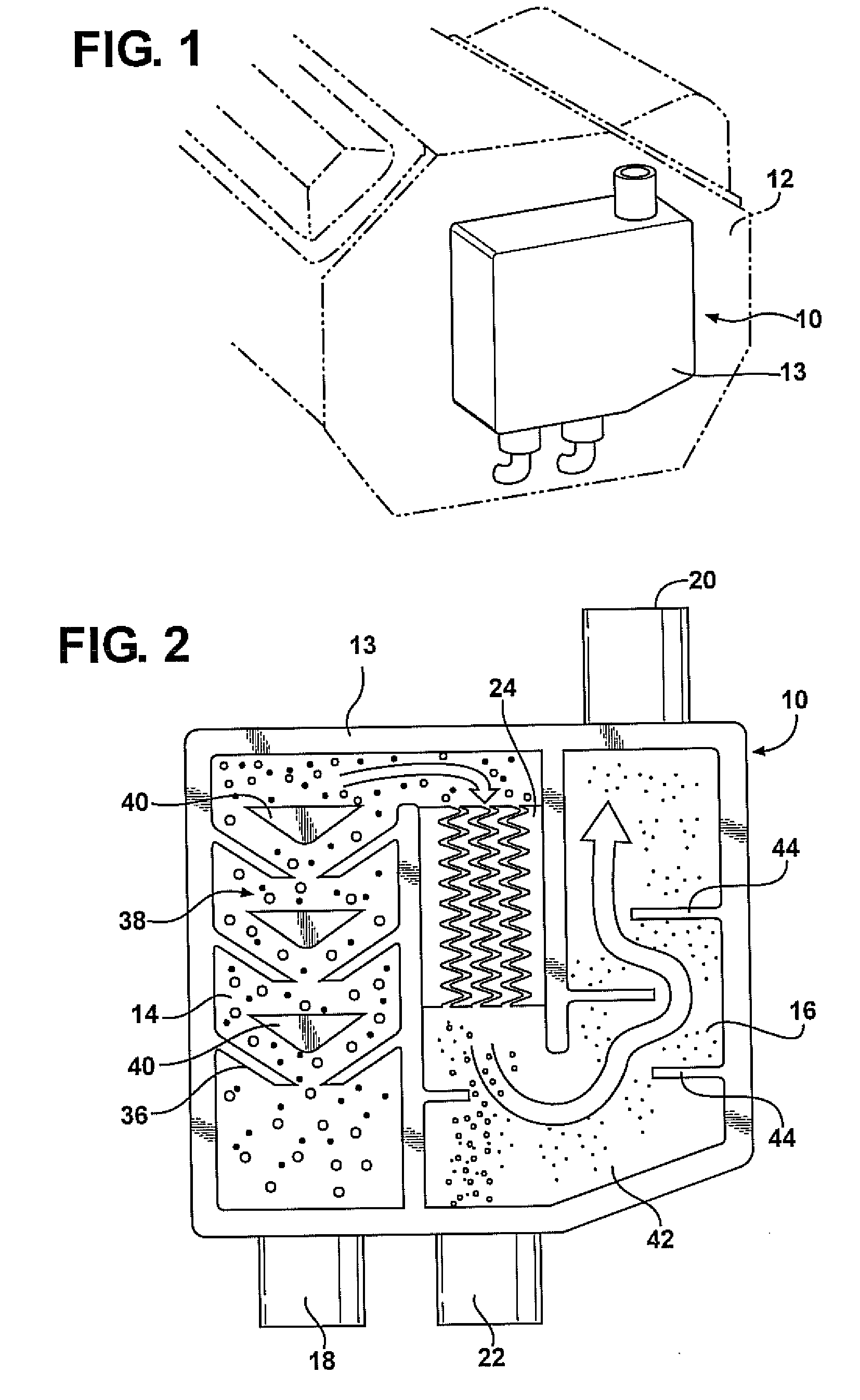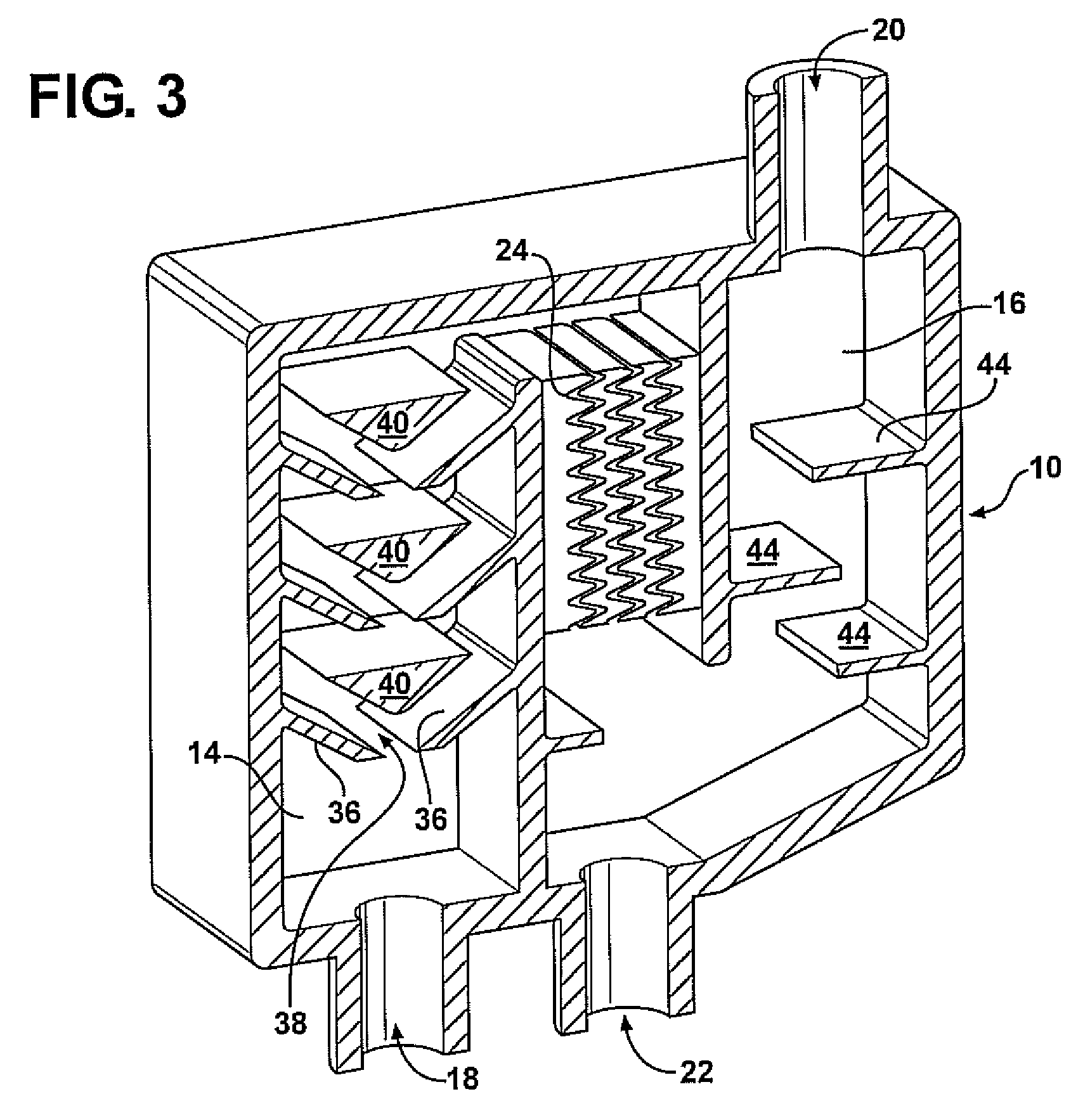Oil separator
a technology of oil separator and separator, which is applied in the direction of separation process, liquid degasification, chemistry apparatus and processes, etc., can solve the problems of reducing engine efficiency, inefficient oil separation device, and increasing oil consumption
- Summary
- Abstract
- Description
- Claims
- Application Information
AI Technical Summary
Benefits of technology
Problems solved by technology
Method used
Image
Examples
Embodiment Construction
[0011]Referring to the Figures, wherein like numerals indicate corresponding parts throughout the several views, an oil separating device 10 for separating oil from crankcase gases is generally indicated at 10. With reference now to FIG. 1, the oil separating device 10 is part of the vehicle's PCV system and is mounted to the engine 12 so as to receive crankcase gases from the engine 12 and return filtered crankcase gases to the engine intake. The oil separating device 10 includes a housing having a first chamber 14 in communication with a second chamber 16, an inlet 18, an outlet 20 and an oil drain 22. The inlet 18 interconnects the engine 12 with the first chamber 14 so as to allow crankcase gases to be drawn into the first chamber 14. Crankcase gases may be drawn using a vacuum created in the manifold or by escaping exhaust gases, or may be manually drawn using a motor or the like. The outlet 20 interconnects the second chamber 16 with the engine 12 intake so as to allow crankca...
PUM
| Property | Measurement | Unit |
|---|---|---|
| length | aaaaa | aaaaa |
| length | aaaaa | aaaaa |
| pressure | aaaaa | aaaaa |
Abstract
Description
Claims
Application Information
 Login to View More
Login to View More - R&D
- Intellectual Property
- Life Sciences
- Materials
- Tech Scout
- Unparalleled Data Quality
- Higher Quality Content
- 60% Fewer Hallucinations
Browse by: Latest US Patents, China's latest patents, Technical Efficacy Thesaurus, Application Domain, Technology Topic, Popular Technical Reports.
© 2025 PatSnap. All rights reserved.Legal|Privacy policy|Modern Slavery Act Transparency Statement|Sitemap|About US| Contact US: help@patsnap.com



